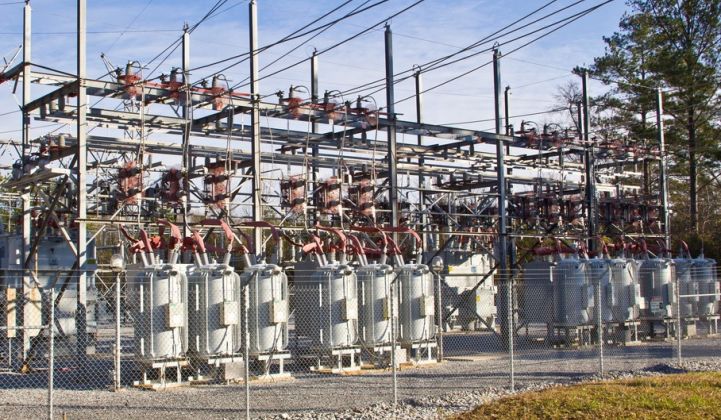LumaSense, a startup founded in 2005 with the stated goal of acquiring its way to dominance in its chosen smart grid field of dissolved gas analysis (DGA) sensors, is a bit different. First of all, it has raised $70 million from Oak Investment Partners and other investors with the specific purpose of buying up companies, not as a shift from its initial business model.
Secondly, it’s bought profitable companies, founder and CEO Vivek Joshi told me in an interview last month. In fact, the Santa Clara, Calif.-based company has been profitable since 2007, when it completed the last of its seven acquisitions, creating a mini-conglomerate with more than 300 employees and customers in North America, Europe and Asia, he said.
Those companies -- Luxtron, Innova, Andros, Mikron, Impac, Opsens and InfraredVision Technologies, to be exact -- already have ongoing business with utilities, supplying sensors that track the health of transformers, load-tap changers, capacitor banks and other grid gear, he said. LumaSense has spent about $60 million in its acquisitions, and borrowed about $10 million to $15 million over that time, bolstered by a $25 million line of credit from Comerica, he said.
By watching how much sulfur hexafluoride and other “weird stuff” is evaporating out of the mineral oil used to insulate transformers and other grid gear, DGA sensors keep closer tabs on equipment health than using power or temperature readings alone. They’re particularly useful in making sure that load-tap changers -- the devices that allow transformers to change relative voltages to manage fluctuations on the grid -- are performing up to snuff.
Less than 5 percent of today’s transformers have DGA monitors, offering opportunities for expansion. Still, it’s a tough market, with competitors like General Electric and Siemens installing their own sensors on the transformers they churn out in massive quantities.
But Joshi told me that LumaSense’s technology can do more, and at less than half the cost, which can be as much as $10,000 and up per transformer for today’s systems. Just as importantly, it’s pitching itself as “a sensor solutions company now,” not just a bunch of companies that sell sensors or subsystems, he said.
“We’ve made a lot of investment in software that captures data and analyzes data, both at the transformer and offline,” he said. “We’re now at the point where, over the next few months, we’ll be able to get data integration as well into our substation health systems.” That could turn a previous generation of relatively single-purpose, communications-siloed sensor devices into a network of interacting, data-sharing grid health monitors.
At least, that’s the vision behind LumaSense’s newest product, a DGA gauge that can be installed in hours, rather than days, and provide data that can be consolidated with distribution grid management (DMS) and outage management (OMS) systems, if the utility has them.
Beyond DGA sensors, Joshi sees LumaSense building a more general sensor platform for substation and distribution grid management, he said. The acquisition of Luxtron gave it a leading share in fiber-optic cable temperature monitoring, and its ThermalSpection technology does substation thermal imaging, for example.
While the U.S. and Europe are key markets, there’s also a lot of opportunity in India to expand the scope of what LumaSense does, Joshi said. He said he’s talking to a large Indian utility about providing an integrated substation monitoring solution on top of its sensor platform, though he didn’t name the prospective customer.
It’s important to remember that the makers of today’s massive grid gear don’t necessarily have that much financial incentive to include technology that helps their customers know how quickly and how often they’re breaking down. If one breaks, after all, they’ll just have to buy a new one.
Industry insiders have told me that even the most up-to-date transformers tend to lack asset management smarts. In that sense, LumaSense seems to have picked a piece of the smart grid where there’s an actual, ongoing need for what the company is building, as compared to, say, plug-in vehicle chargers or home energy management platforms.
Of course, EV charging and home energy management could be big markets someday, making speculative investment attractive. But with tens of billions of smart grid dollars being directed at the distribution grid over the coming decade, there’s plenty of room for growth in niche markets like LumaSense’s chosen field of battle, as well. The main question is whether GE, Siemens, ABB, Schneider Electric and the rest of the giants come up with technology that solves the problem as neatly as LumaSense says it does.



